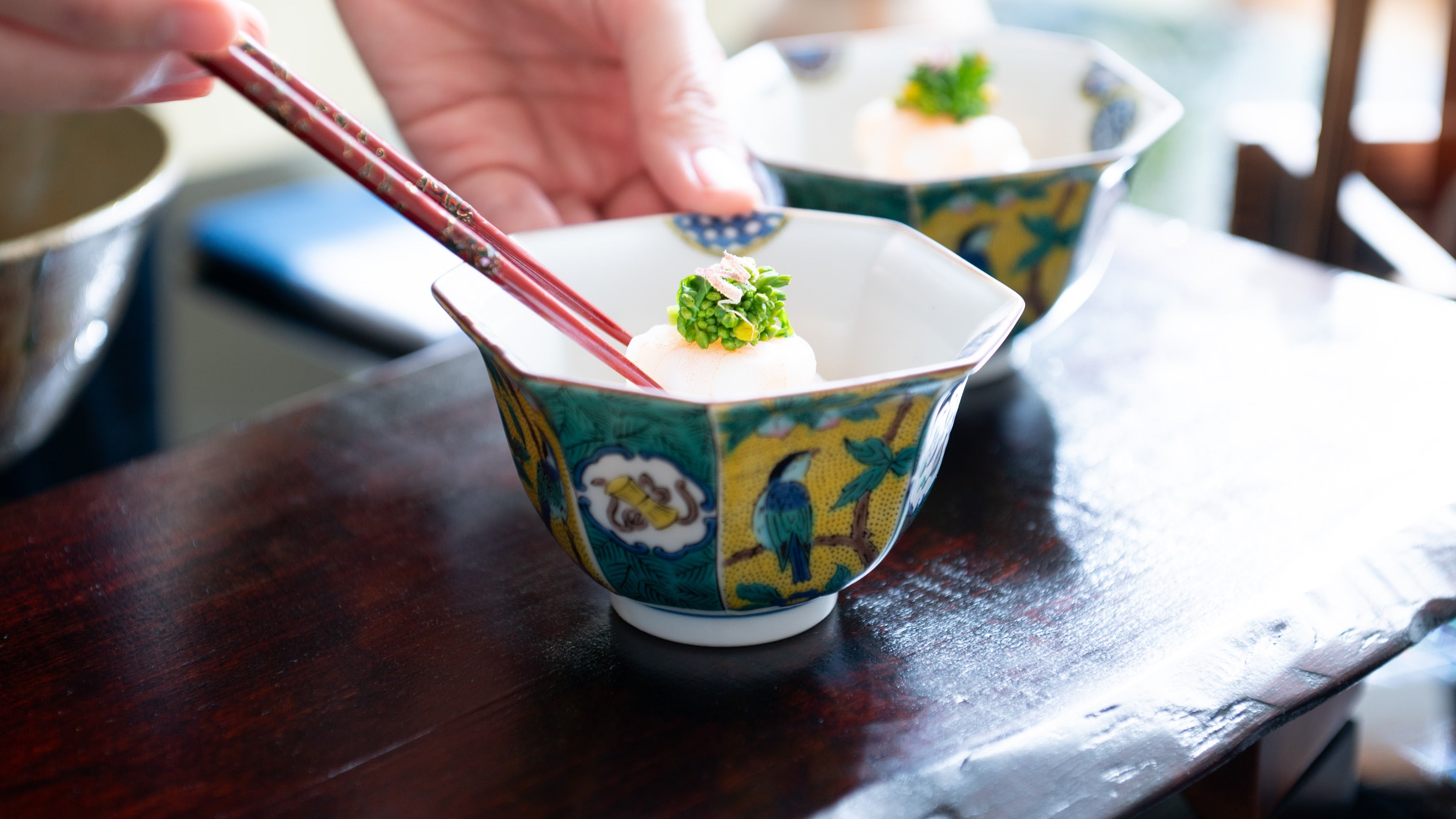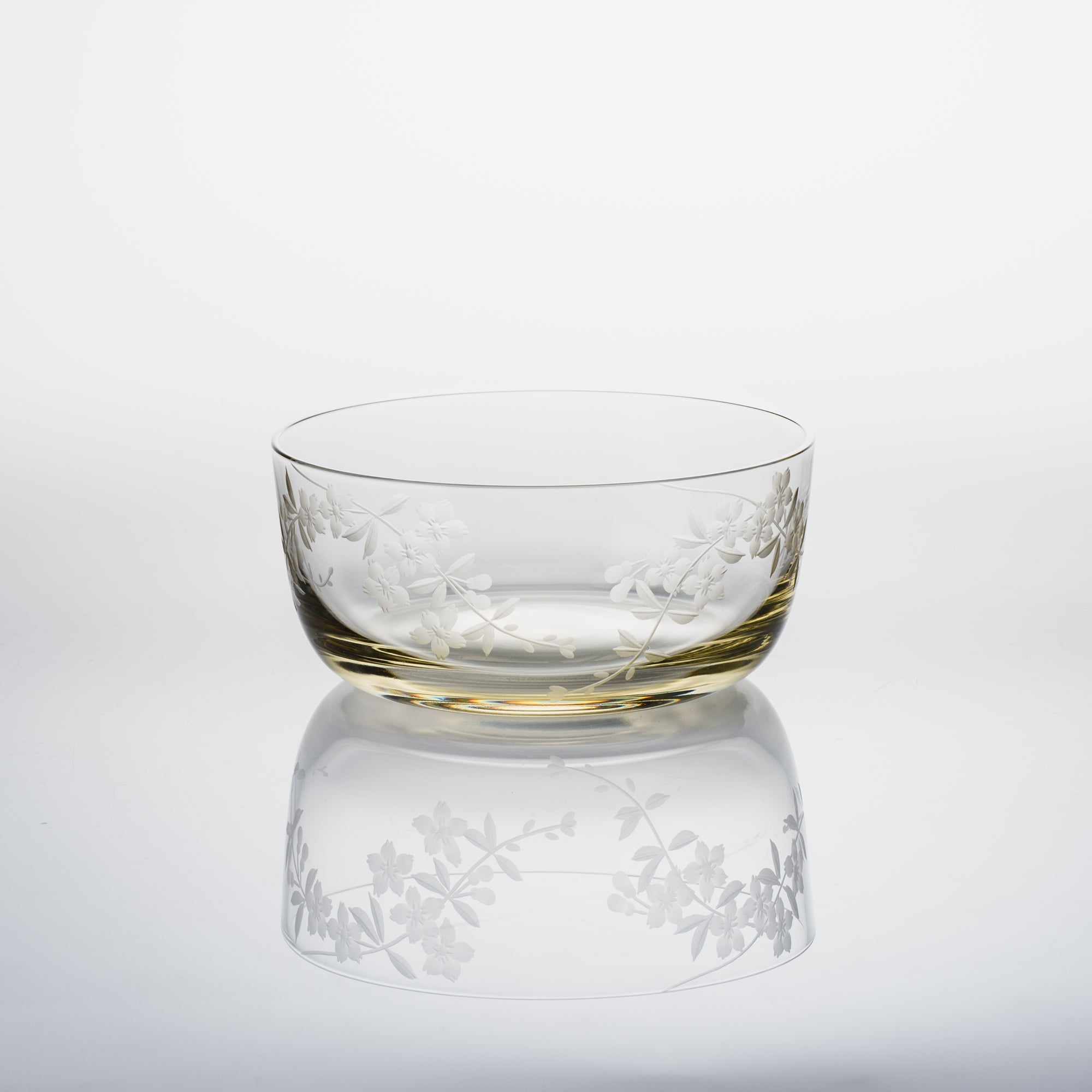
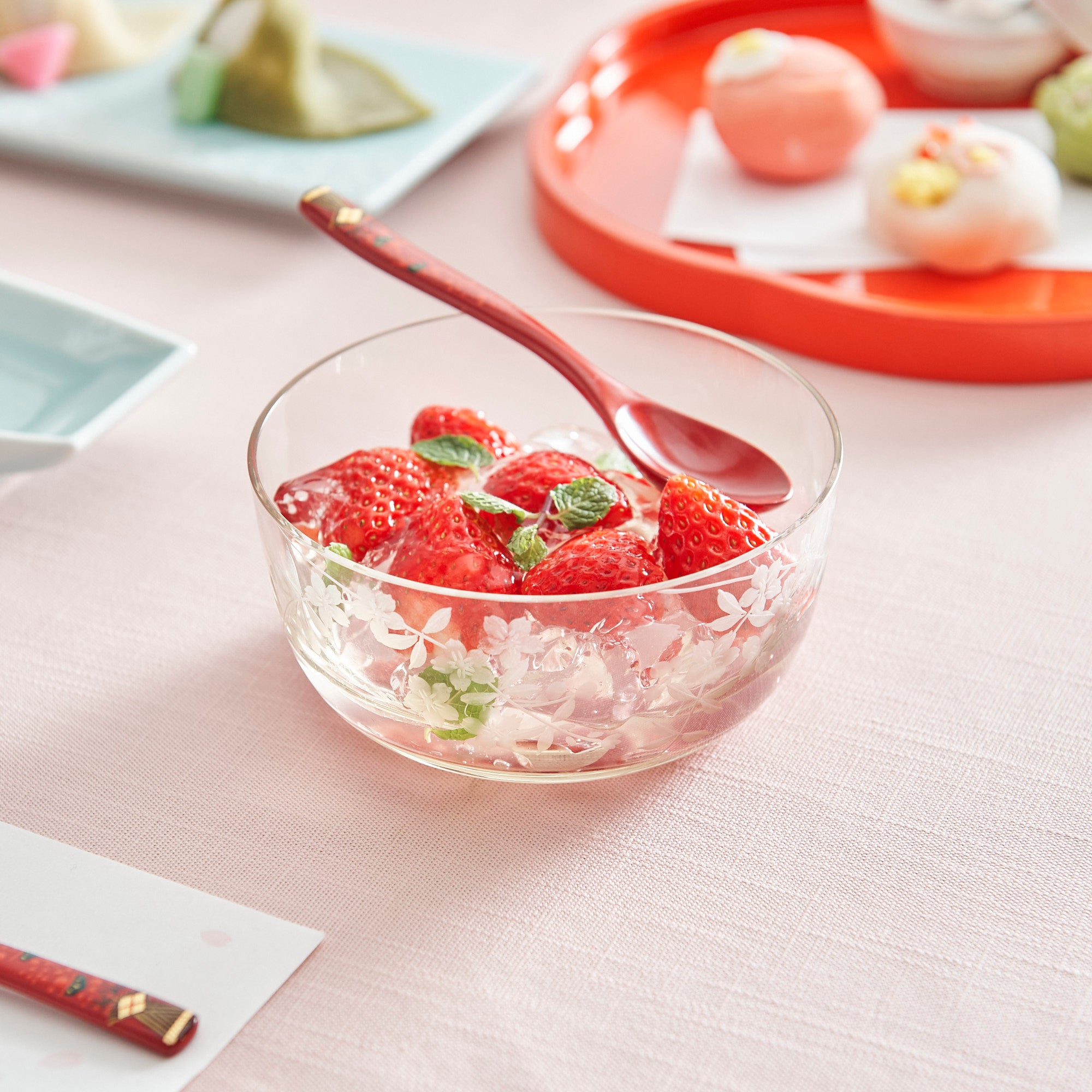
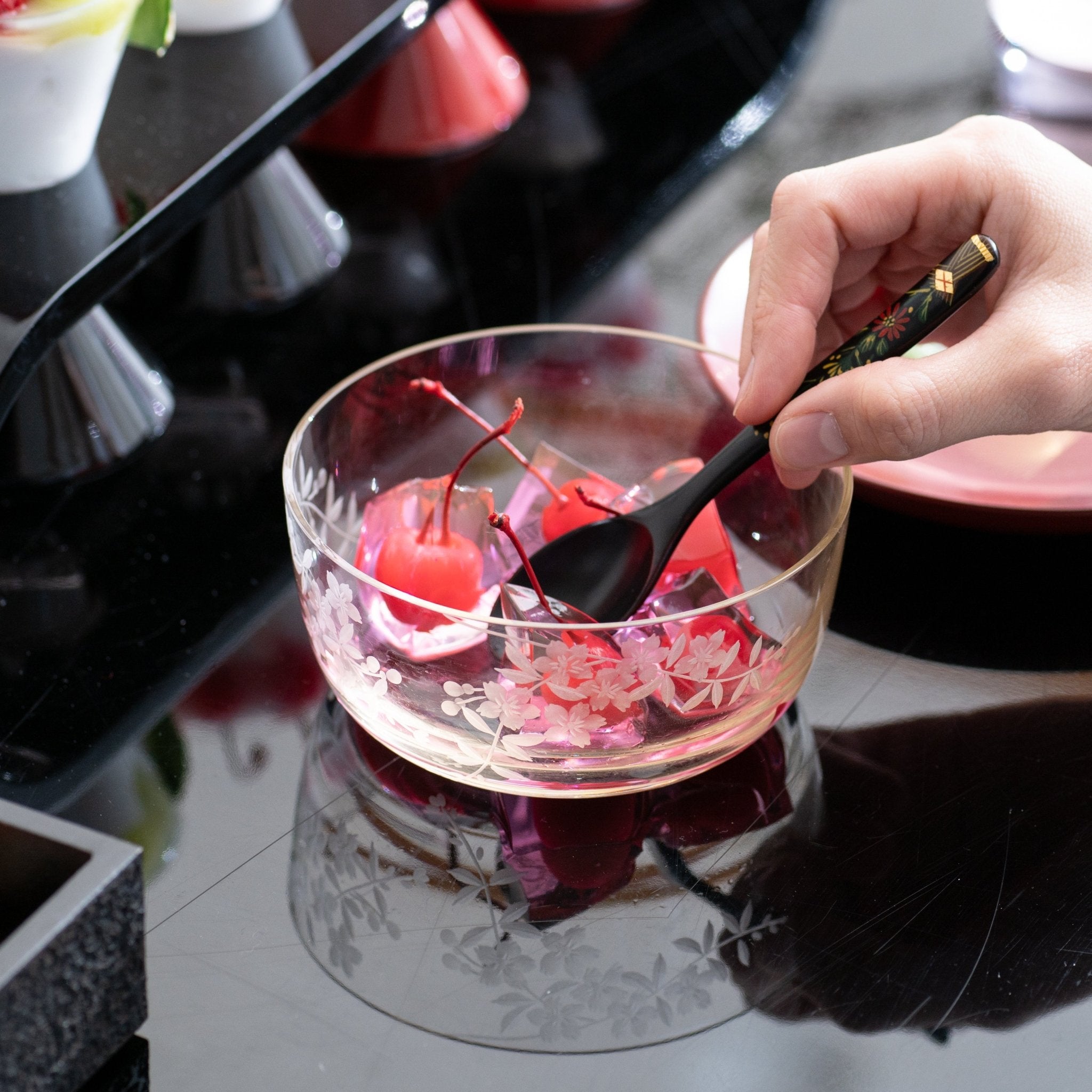
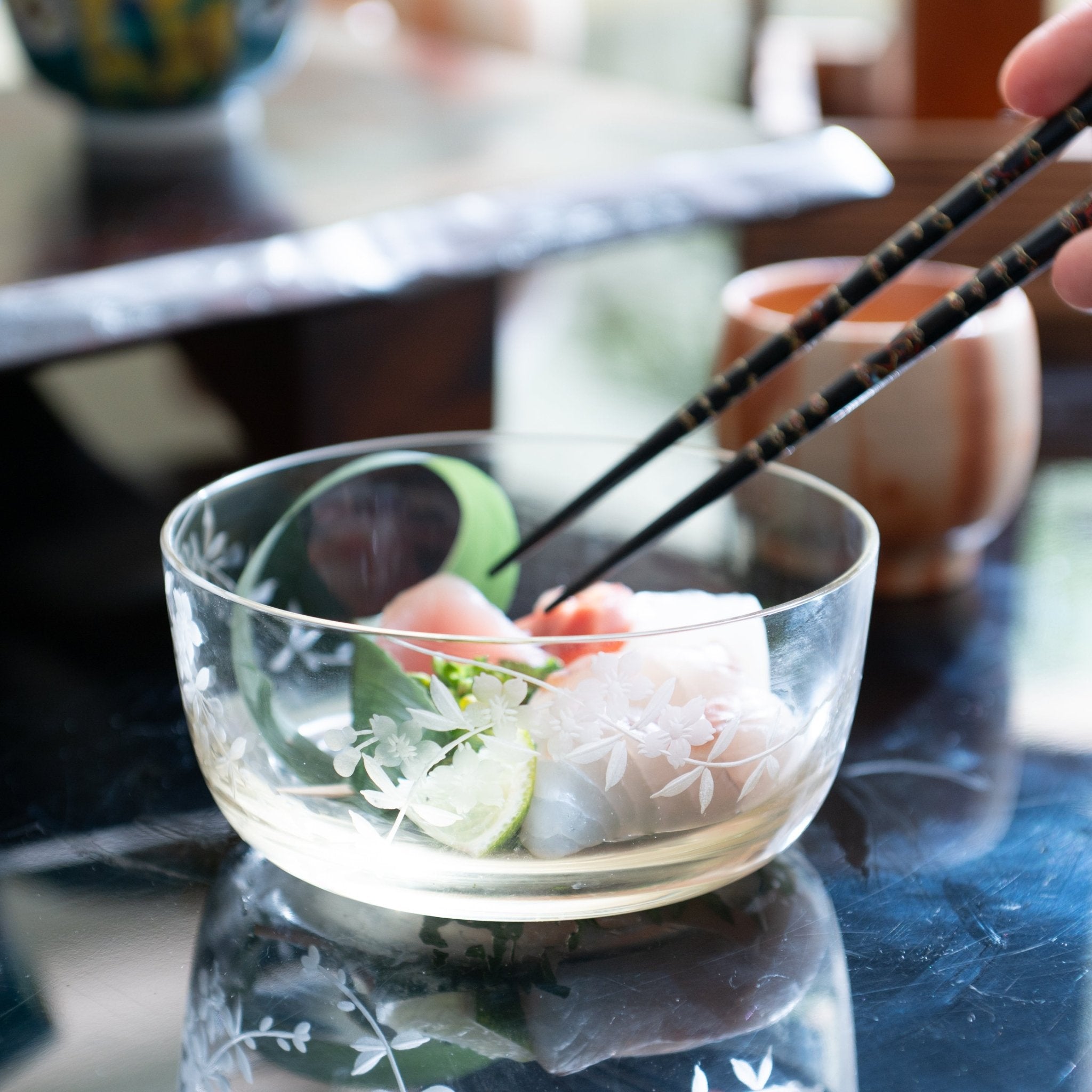
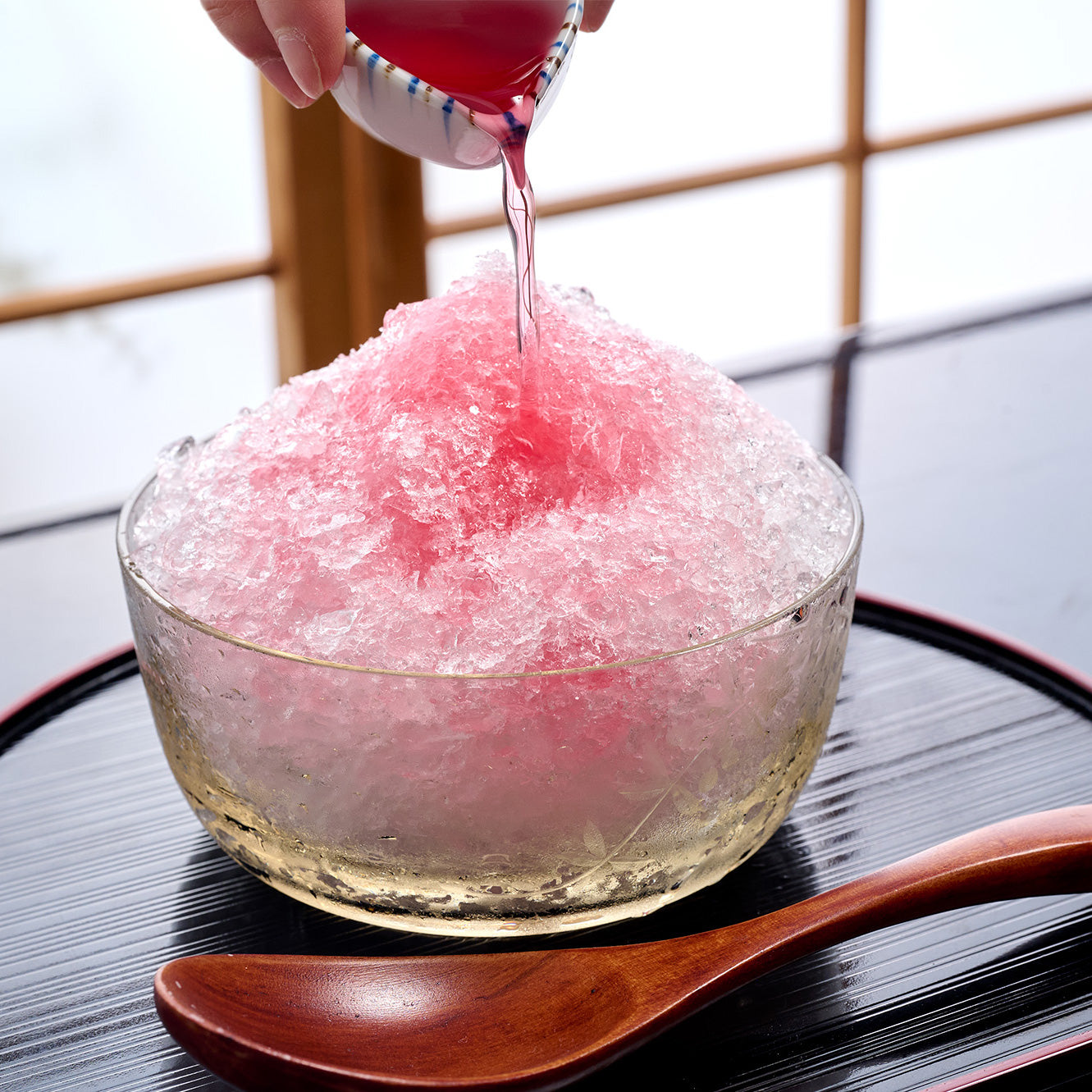
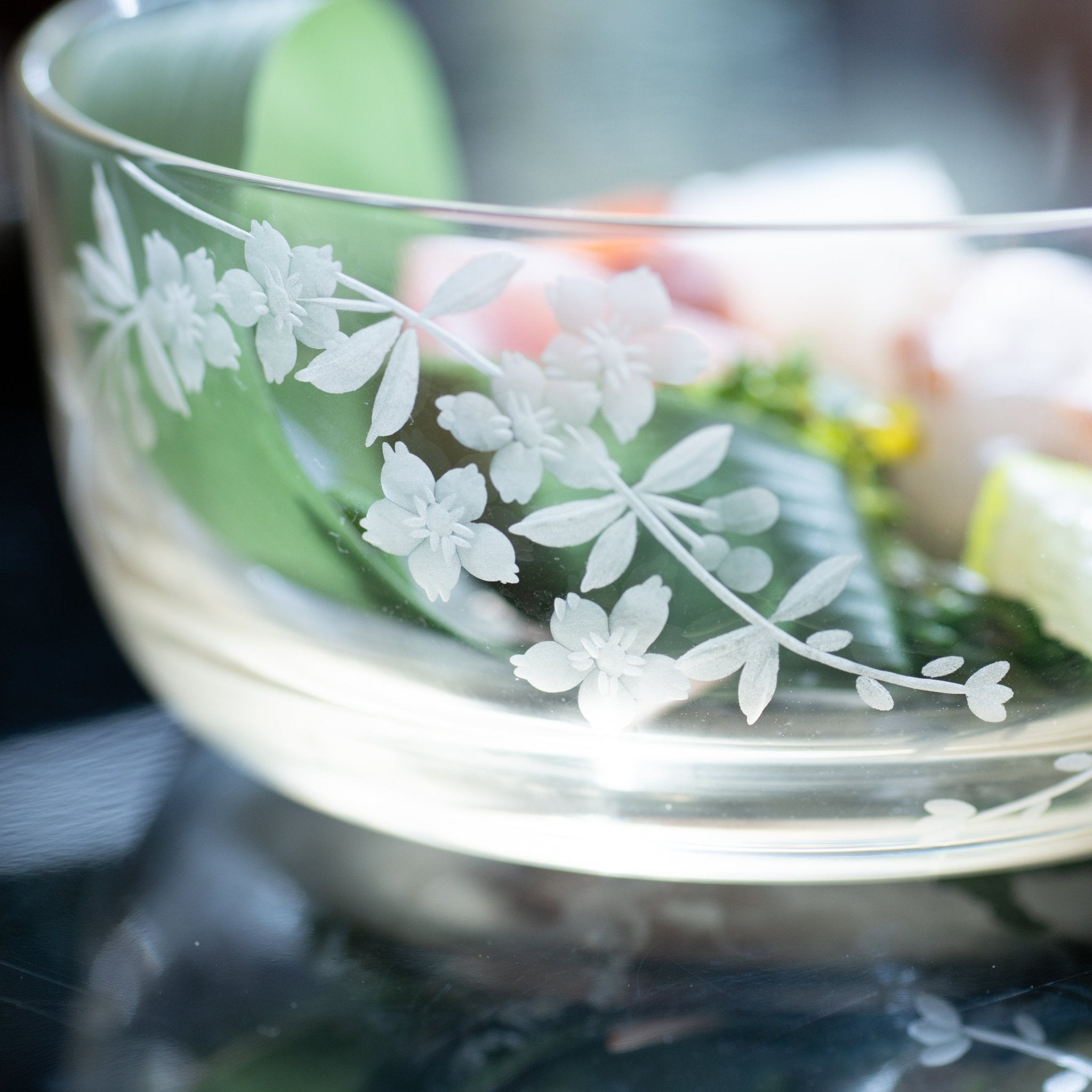
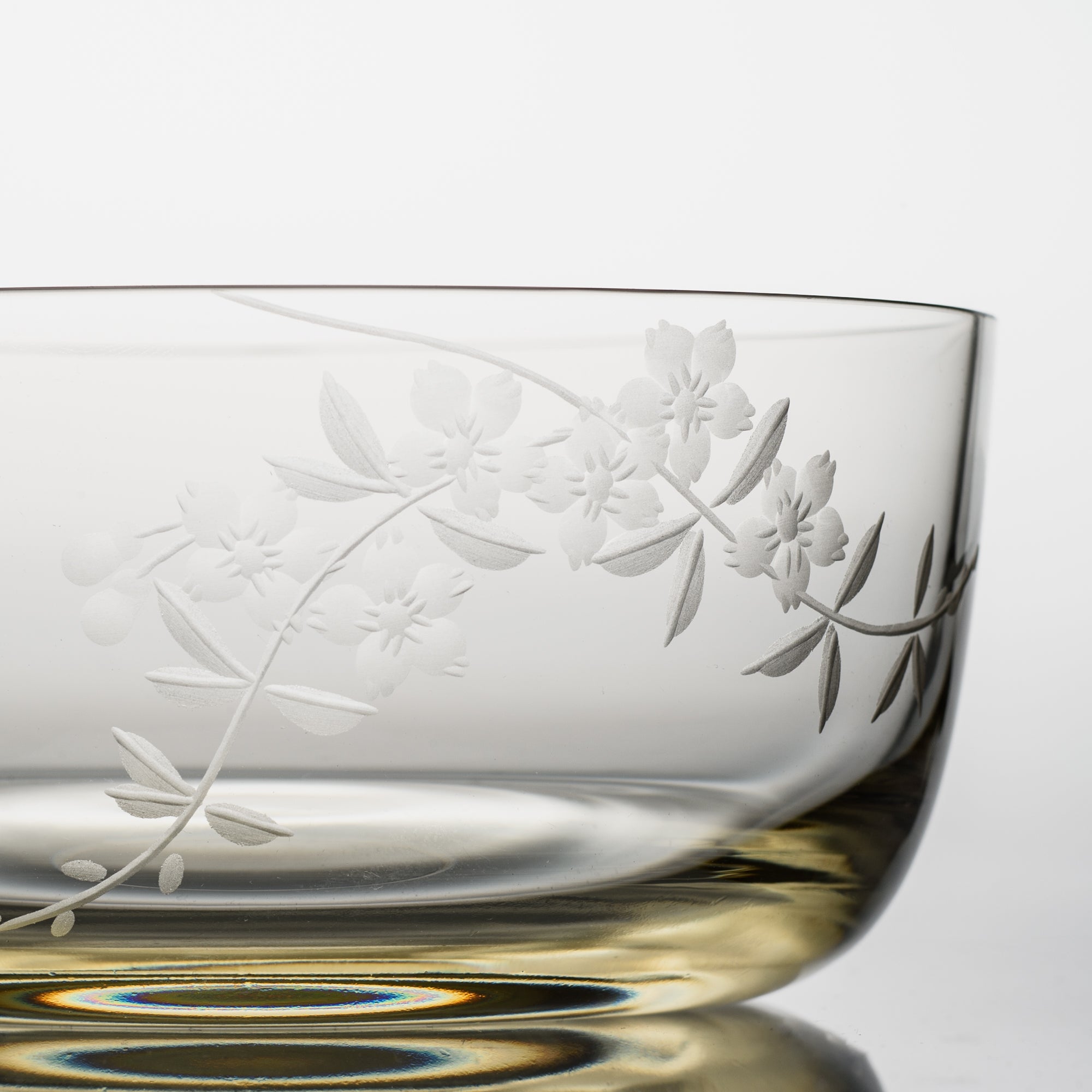
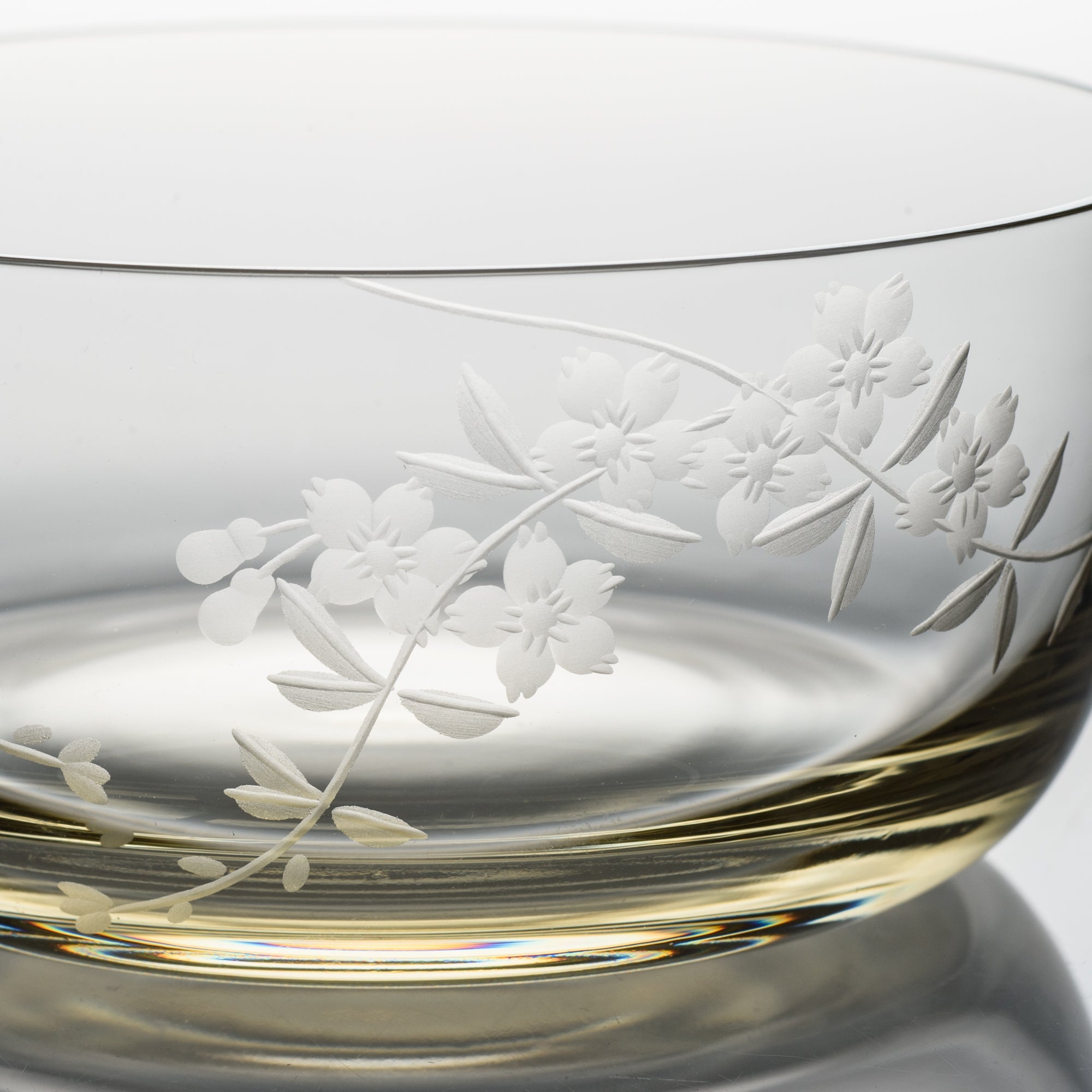
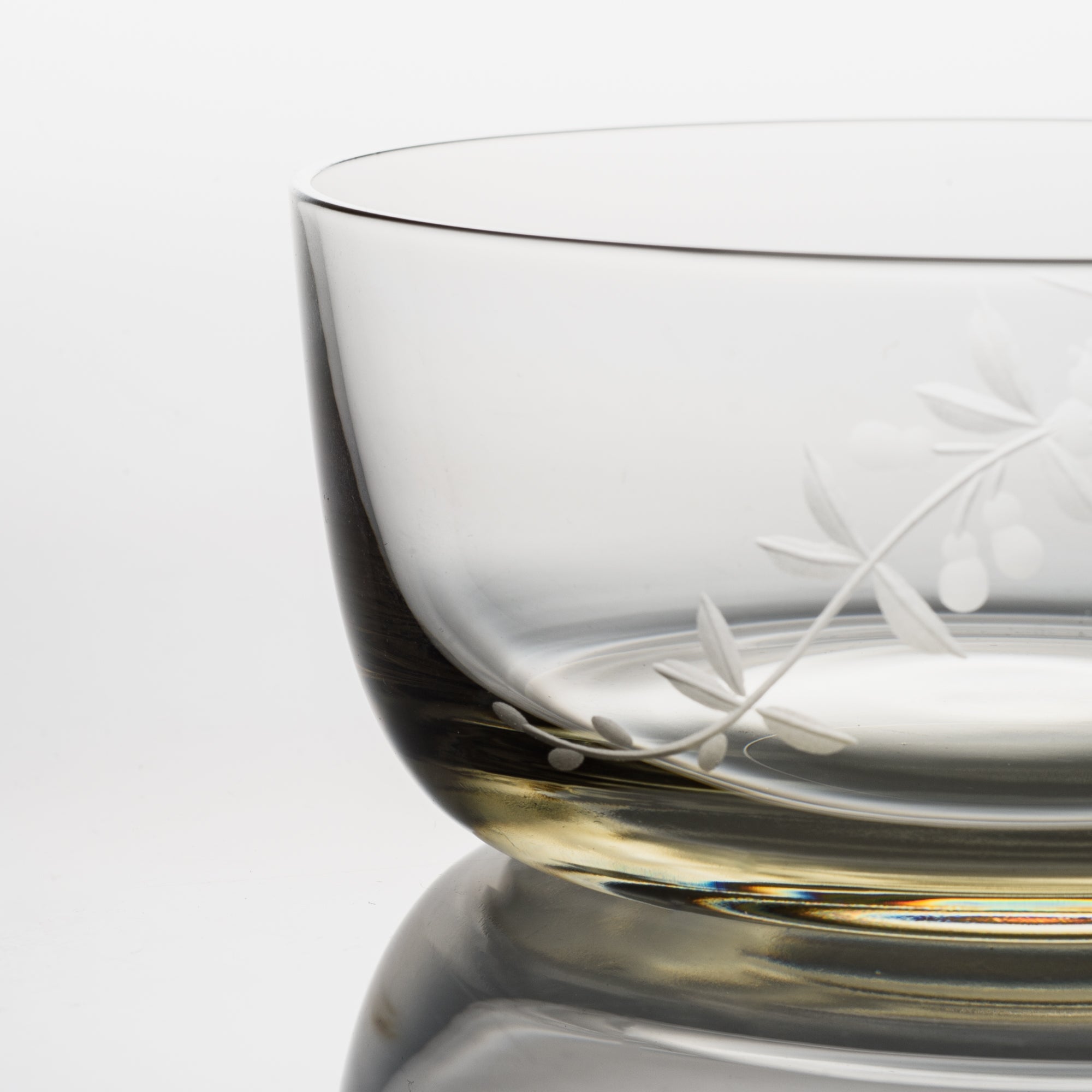
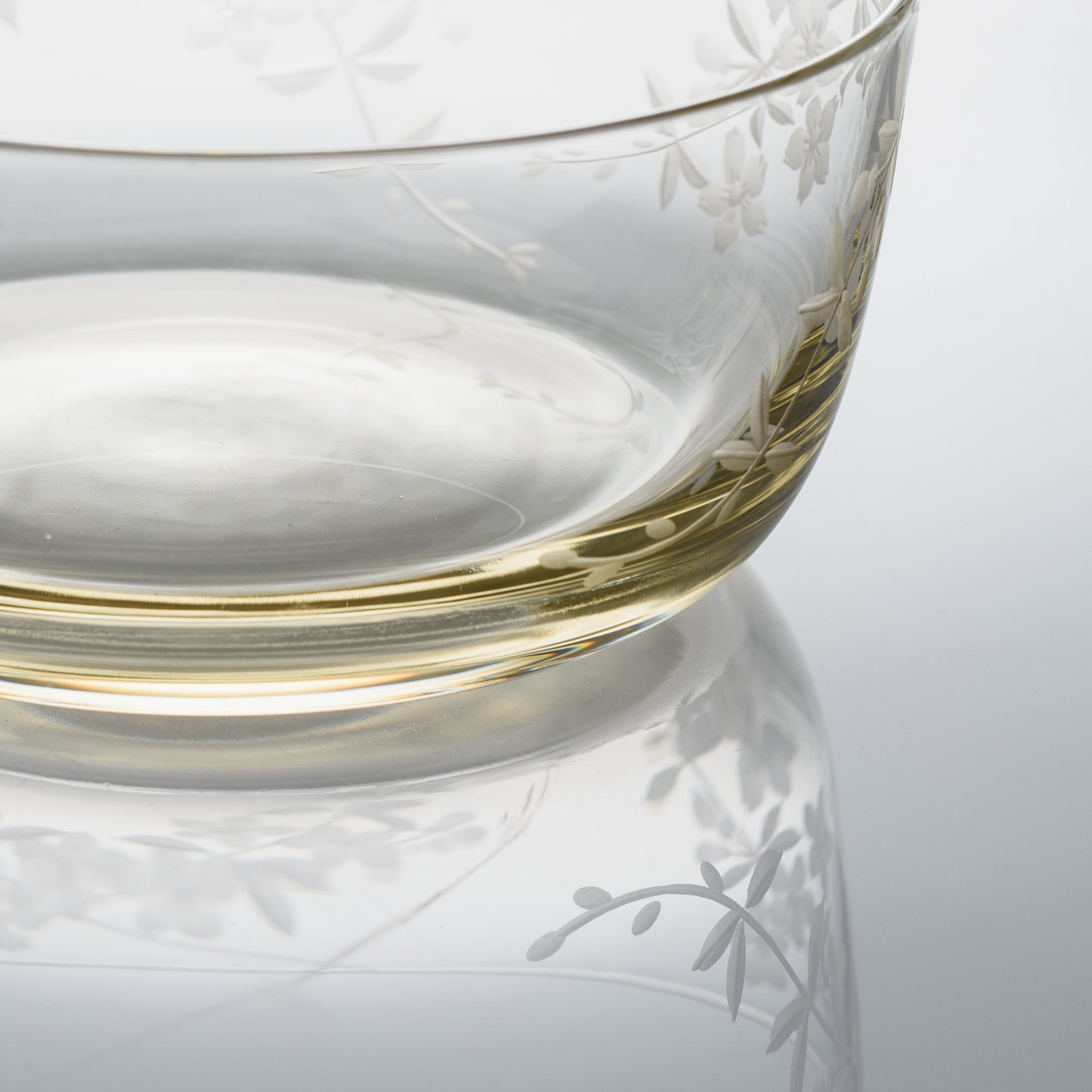
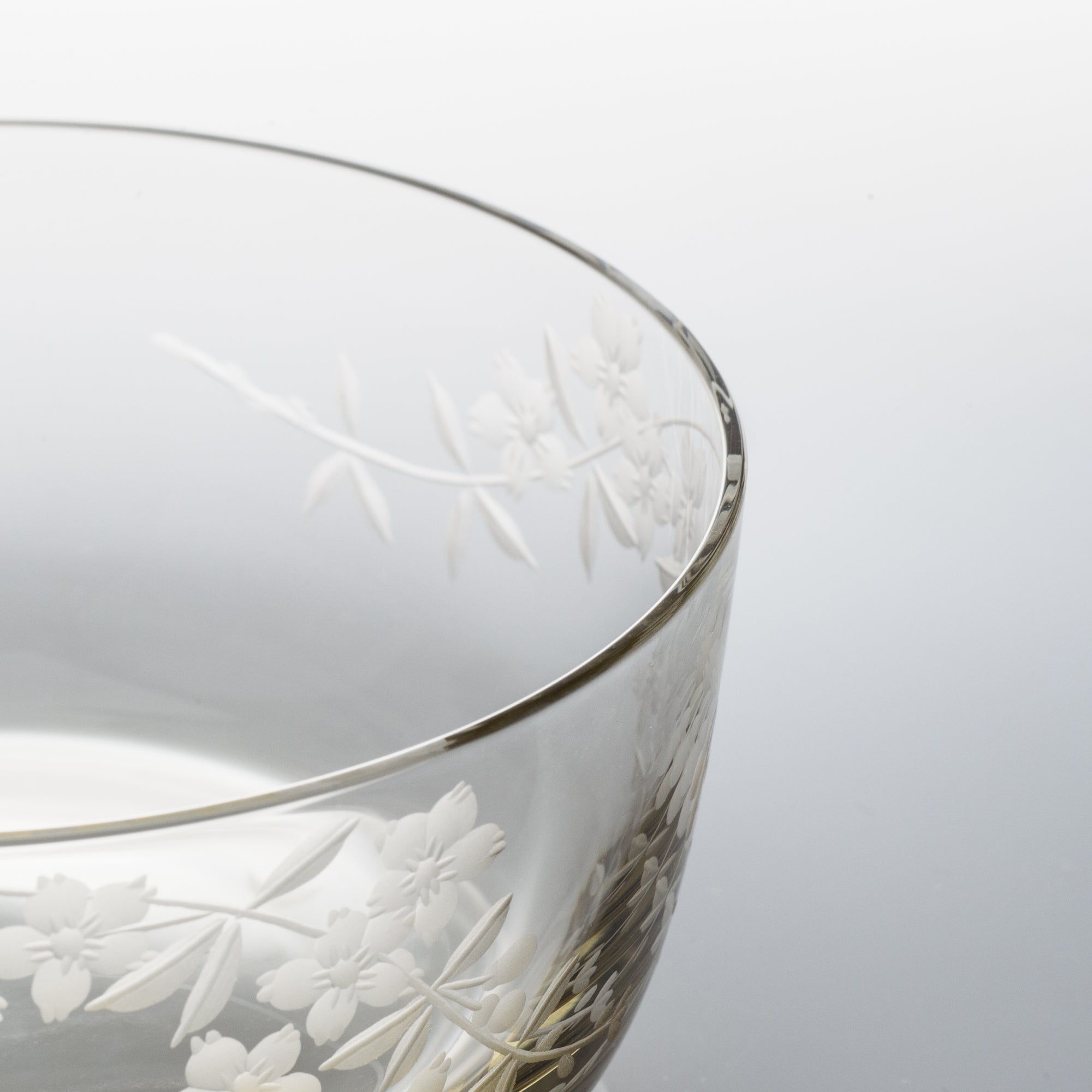
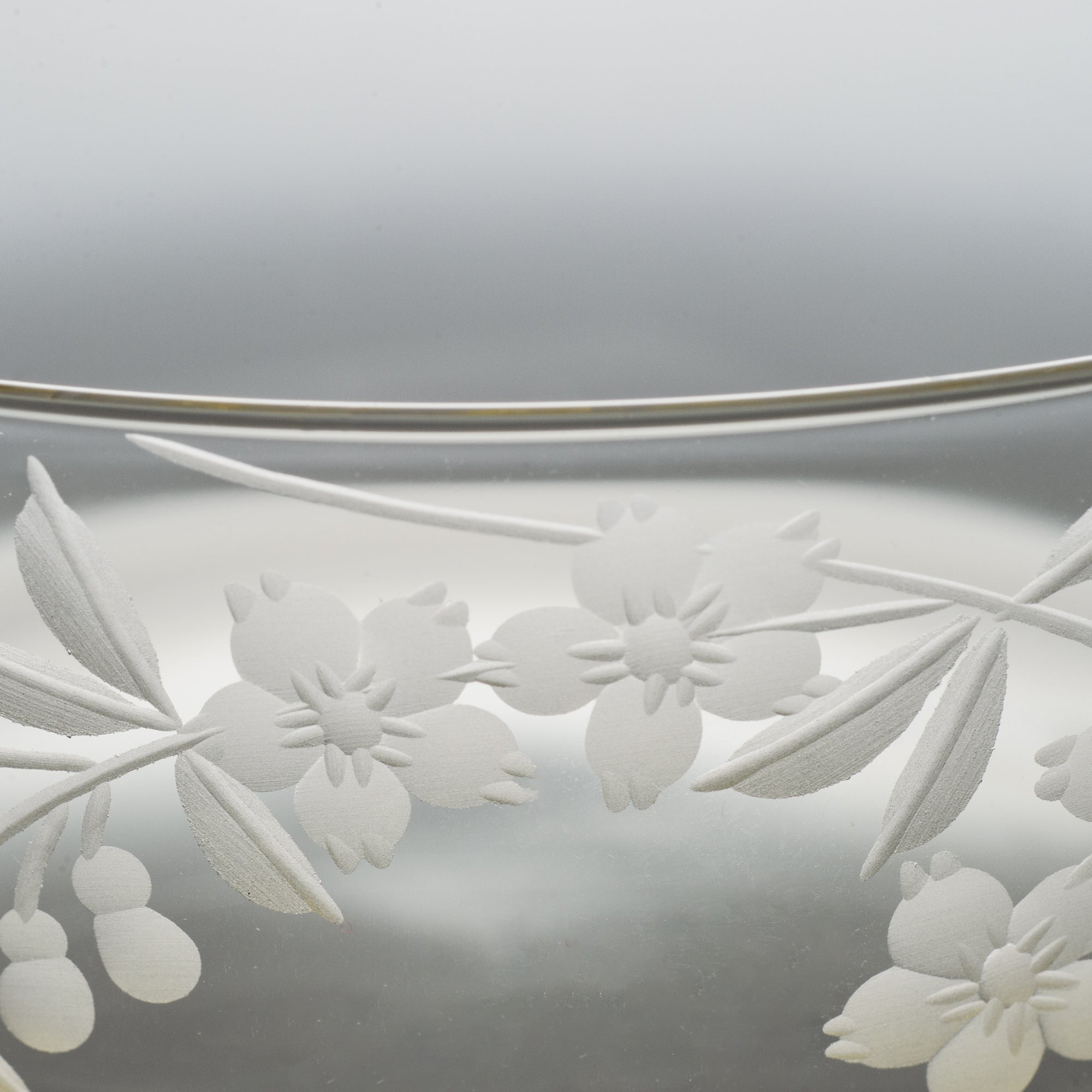
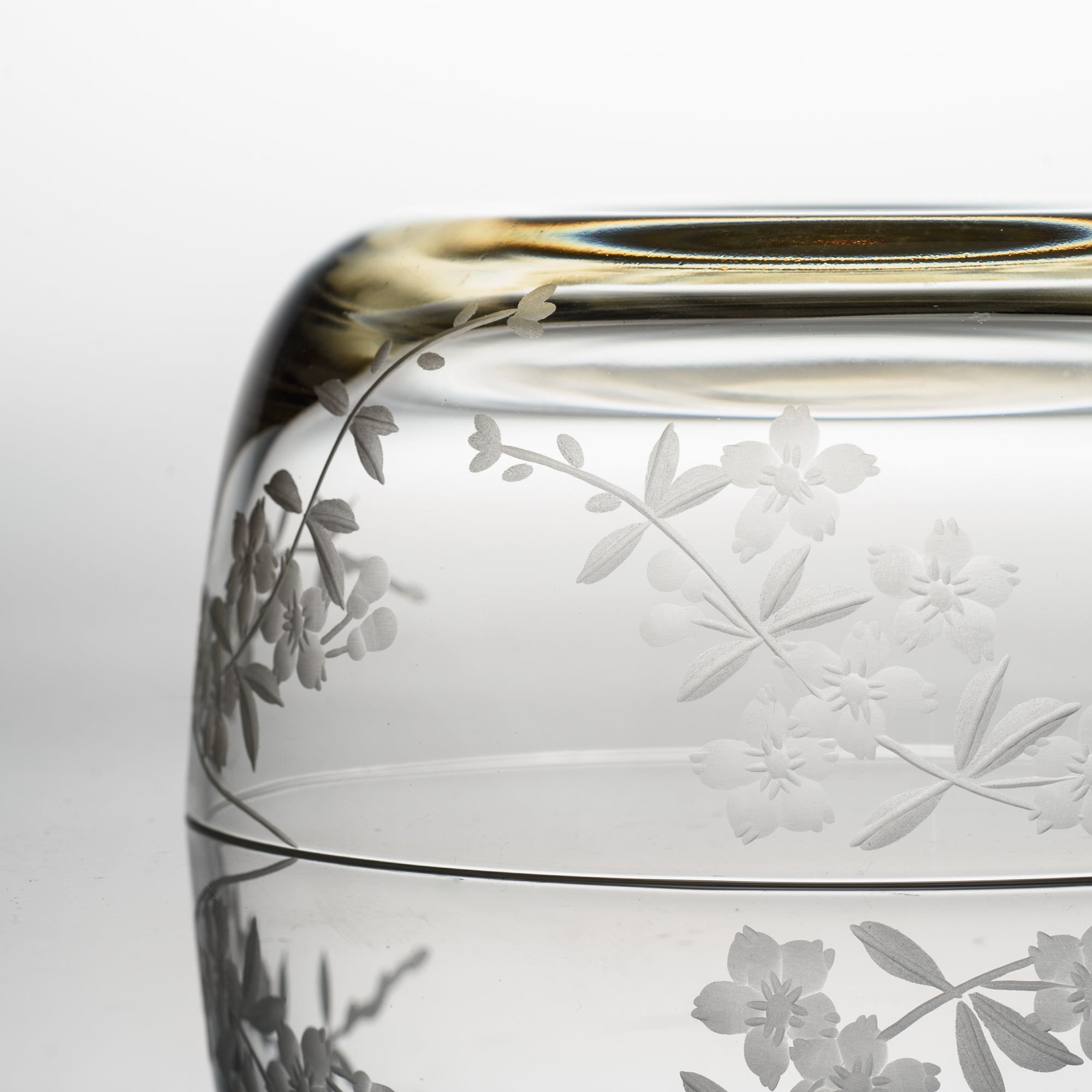

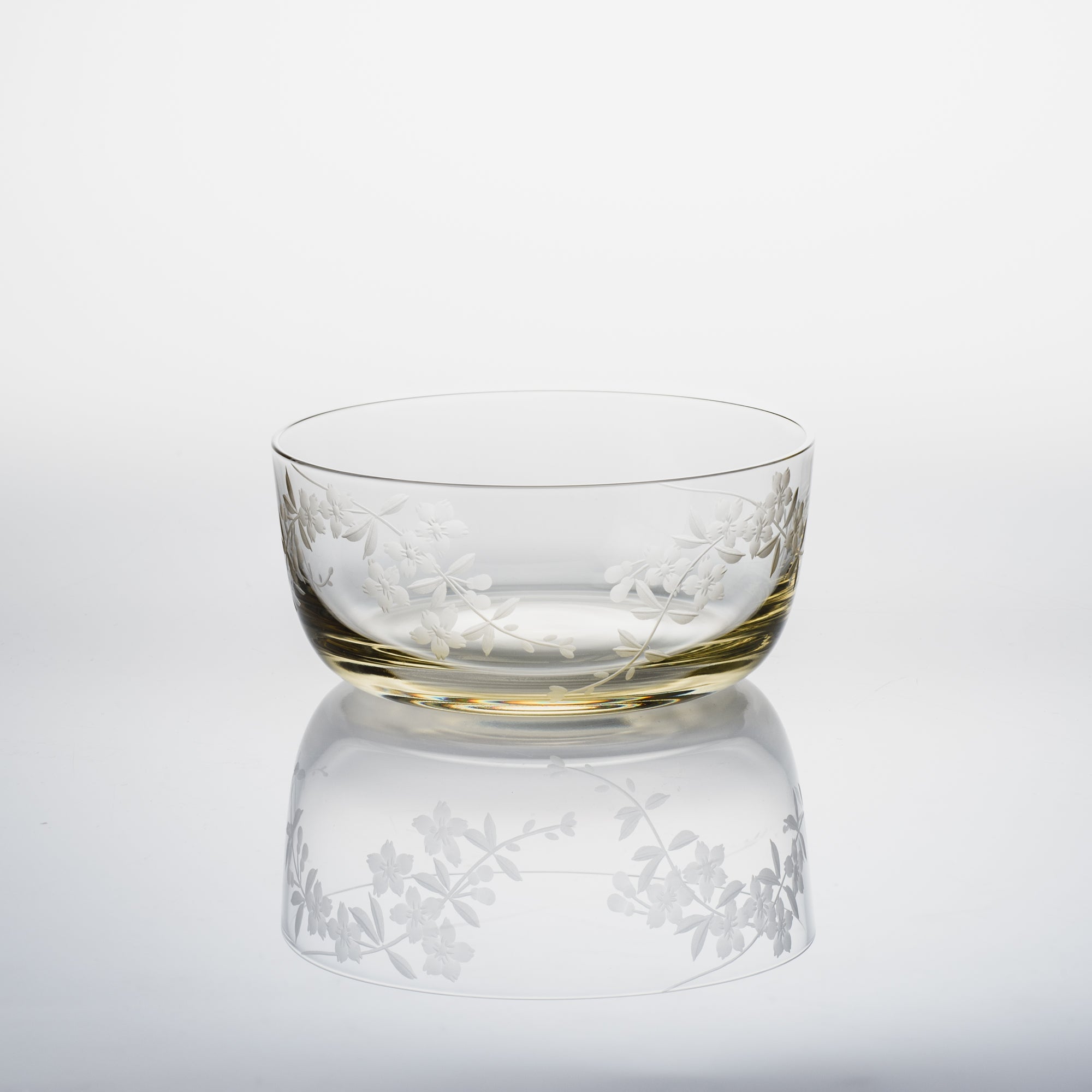
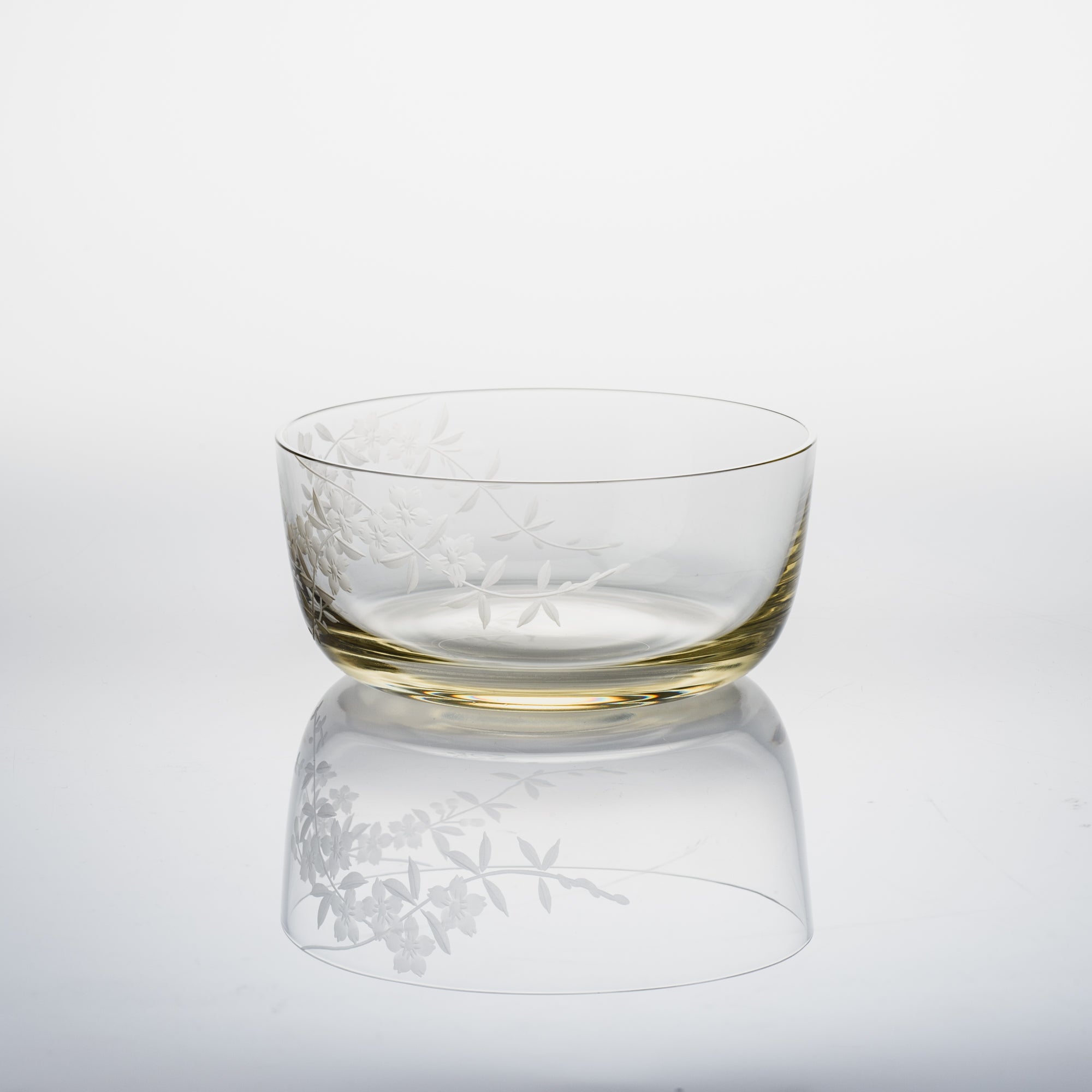
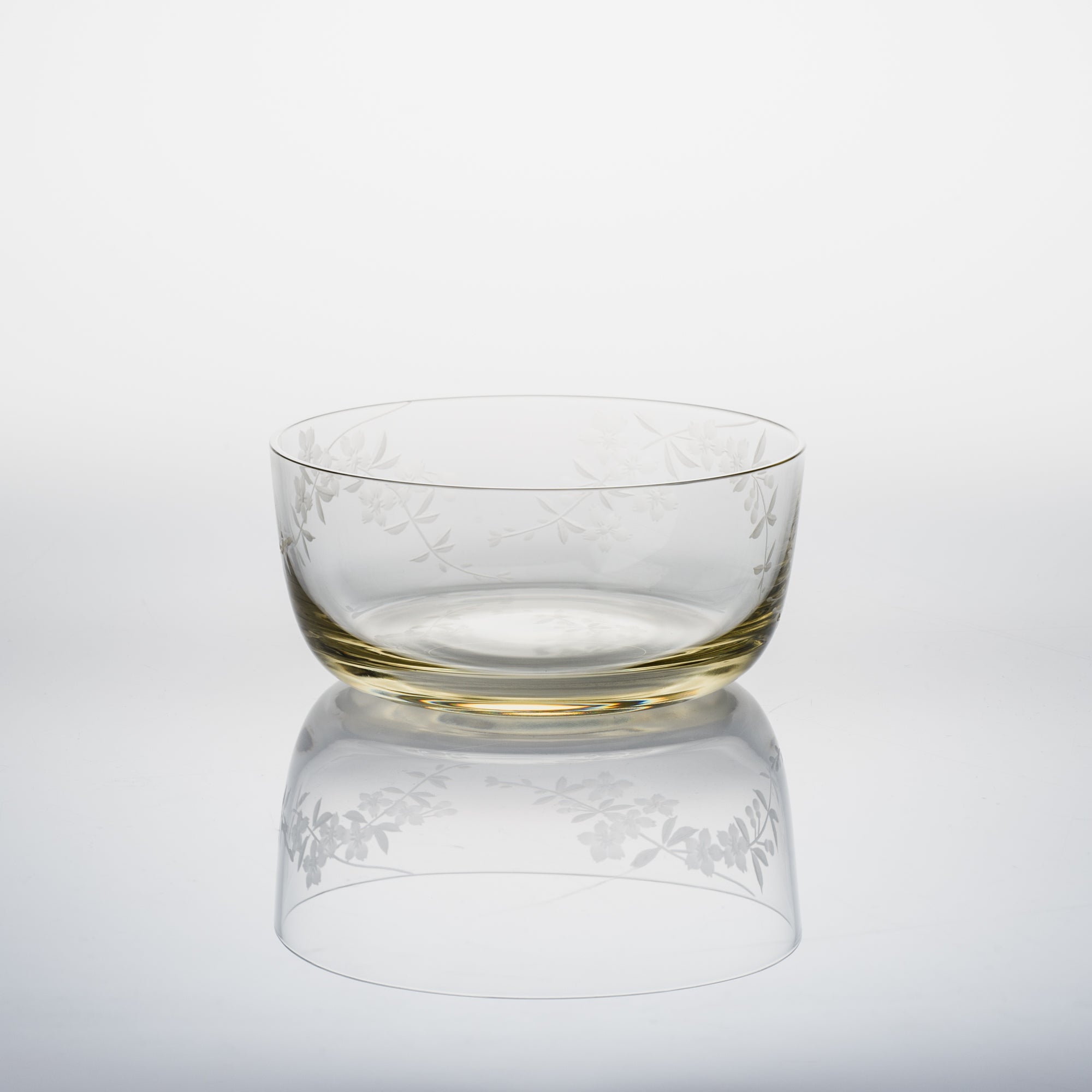
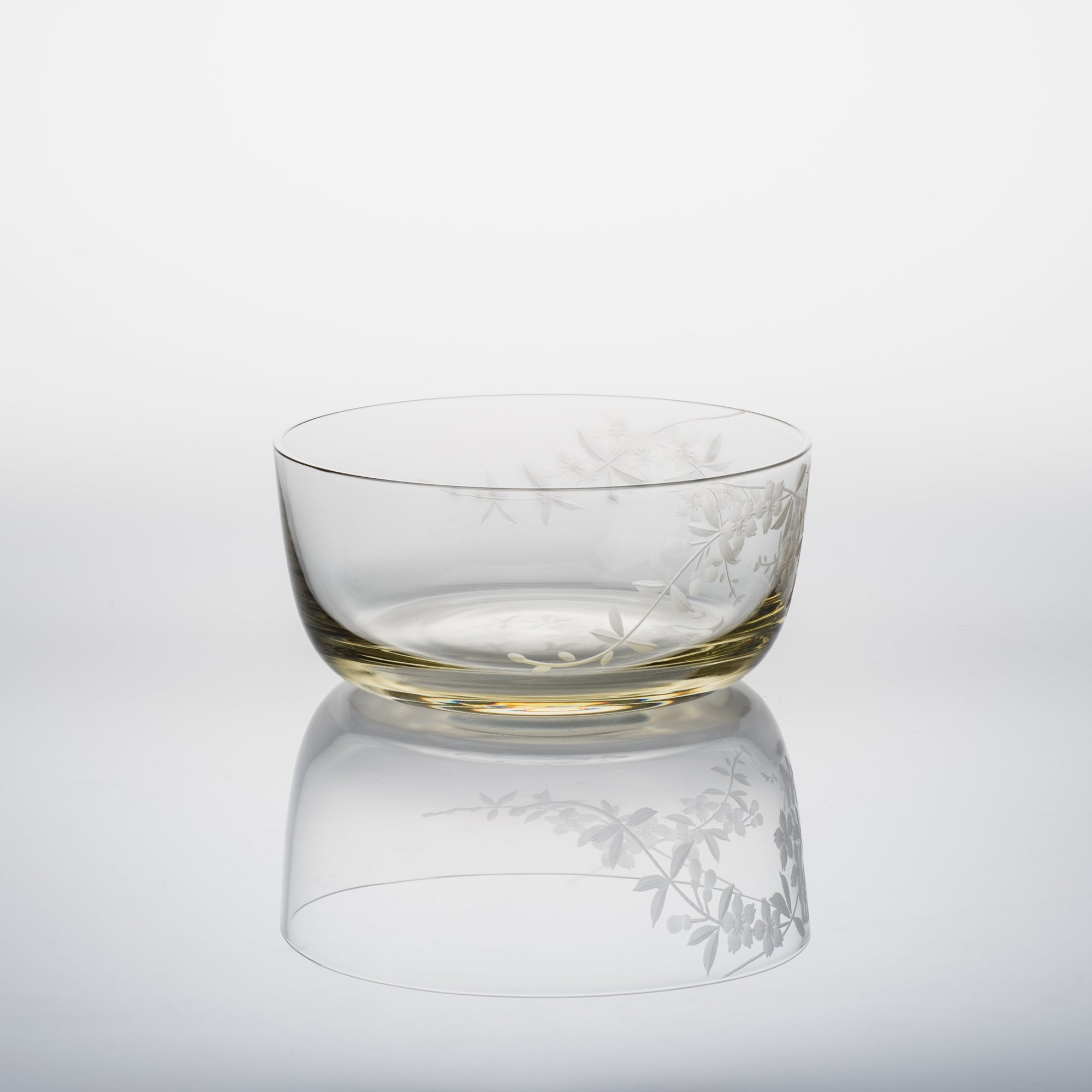
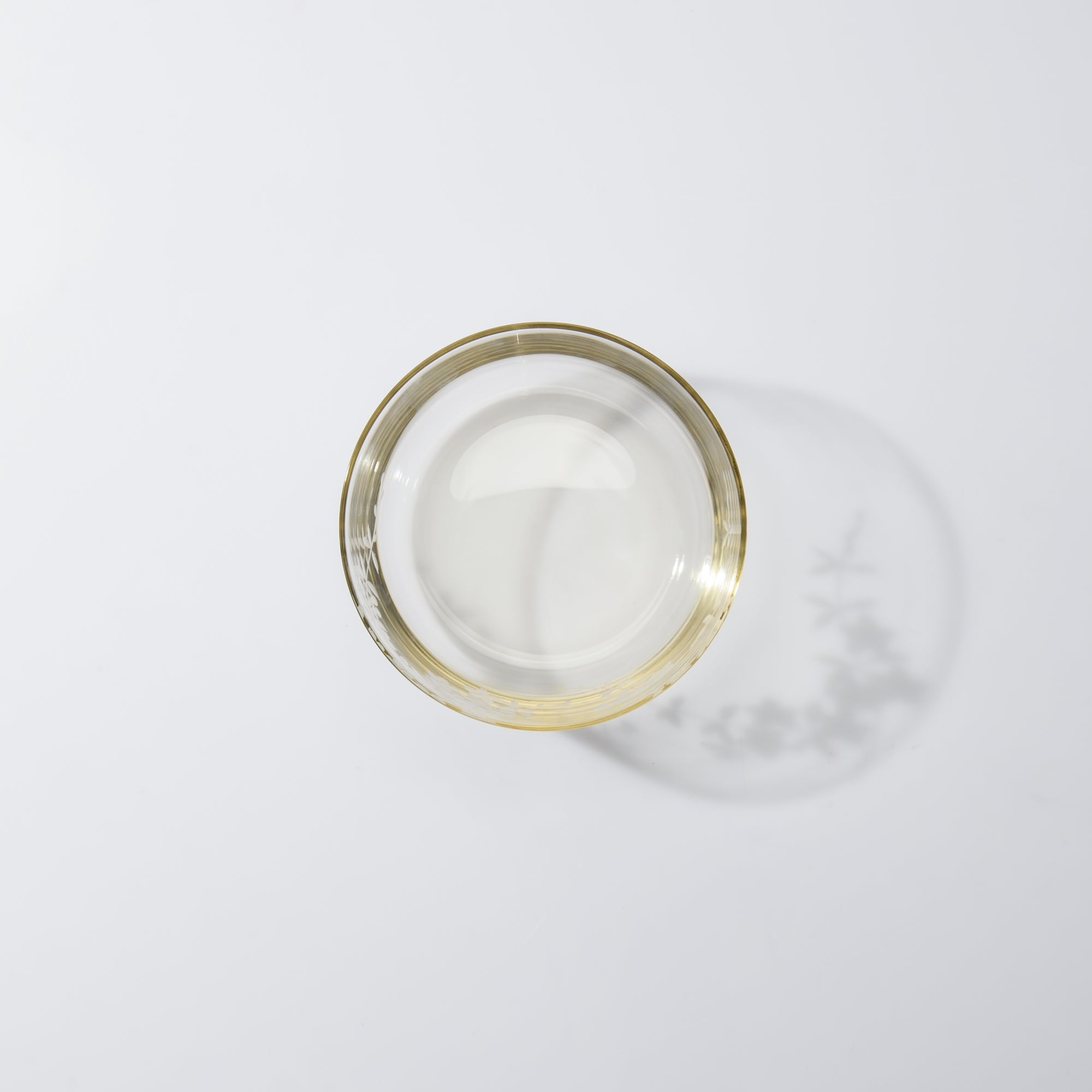
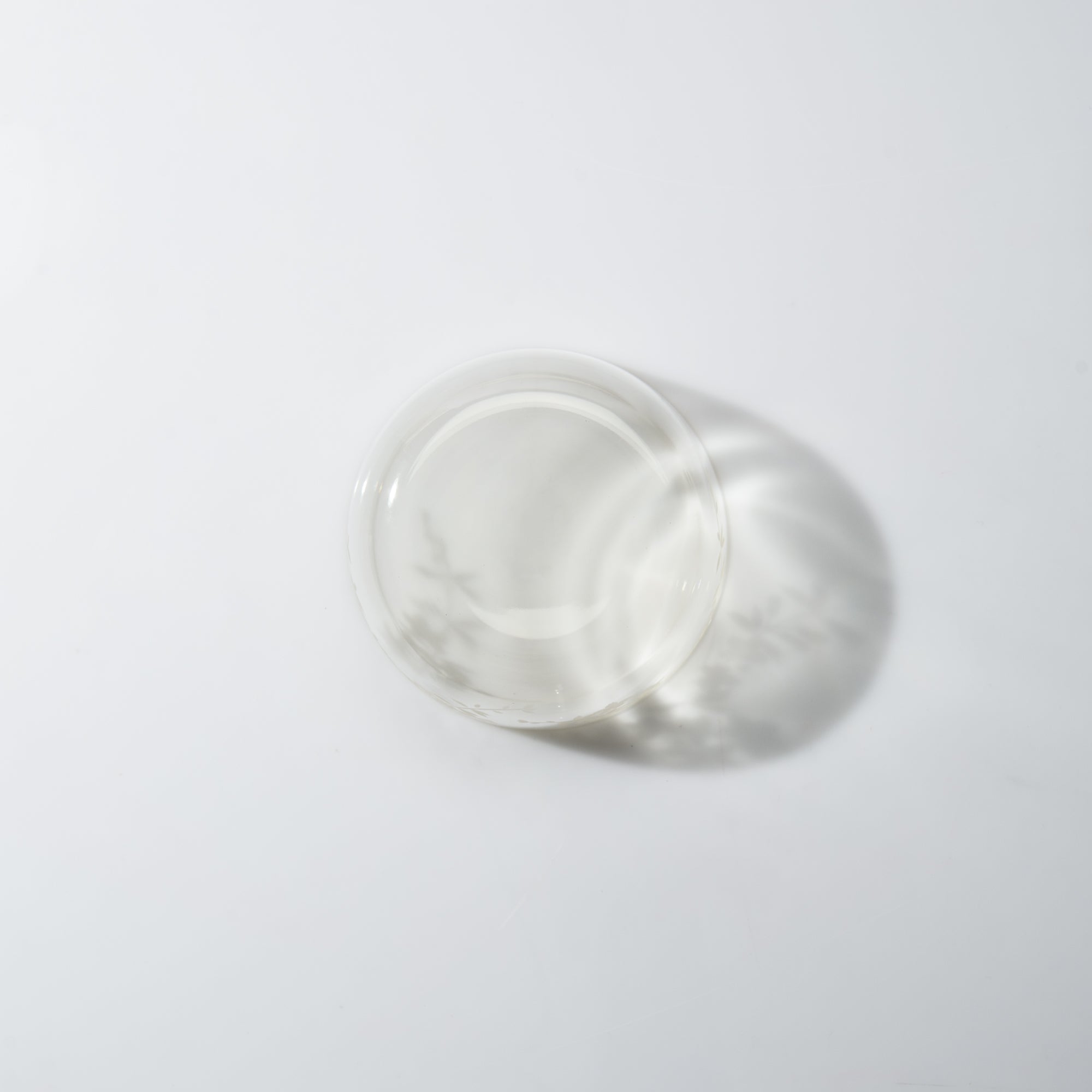
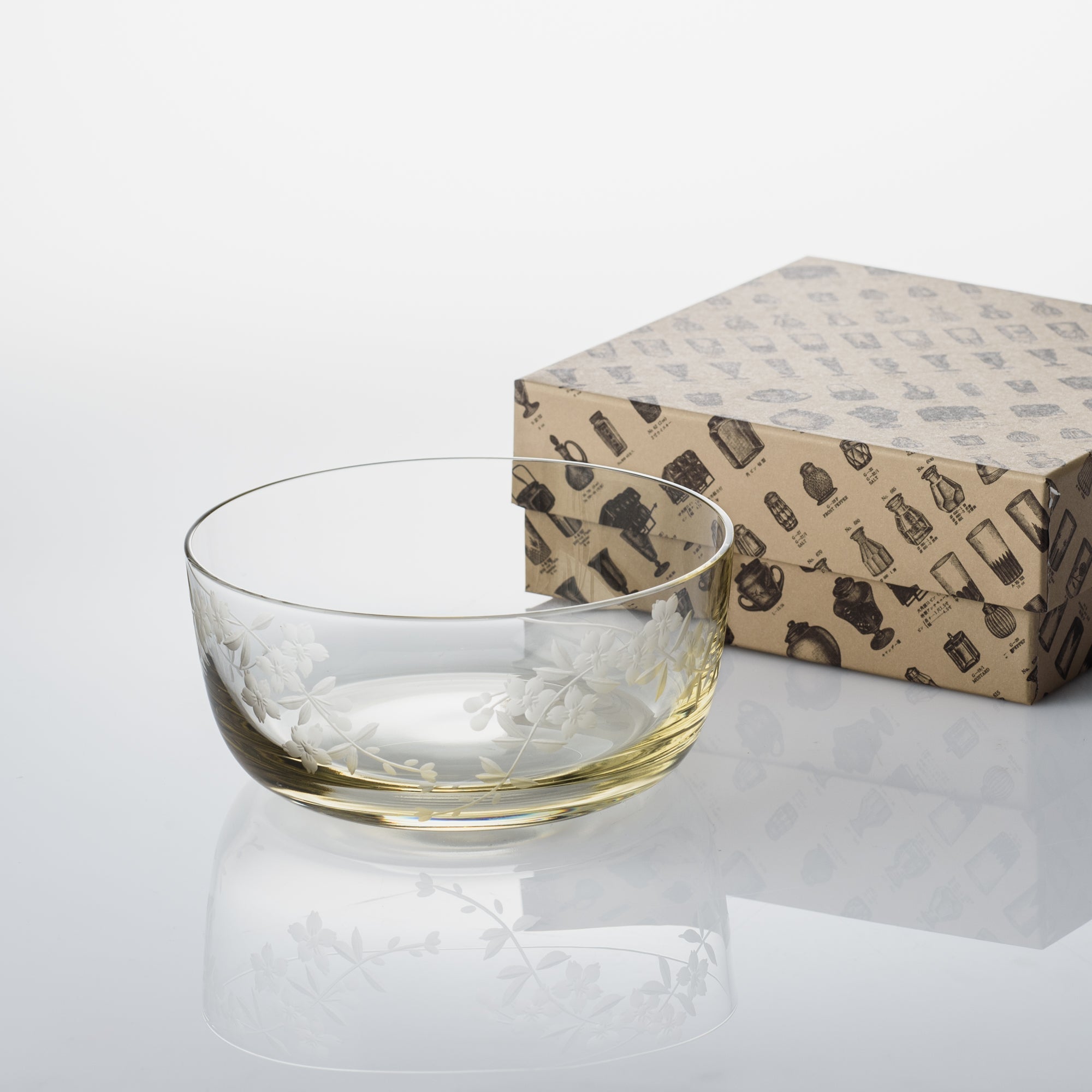
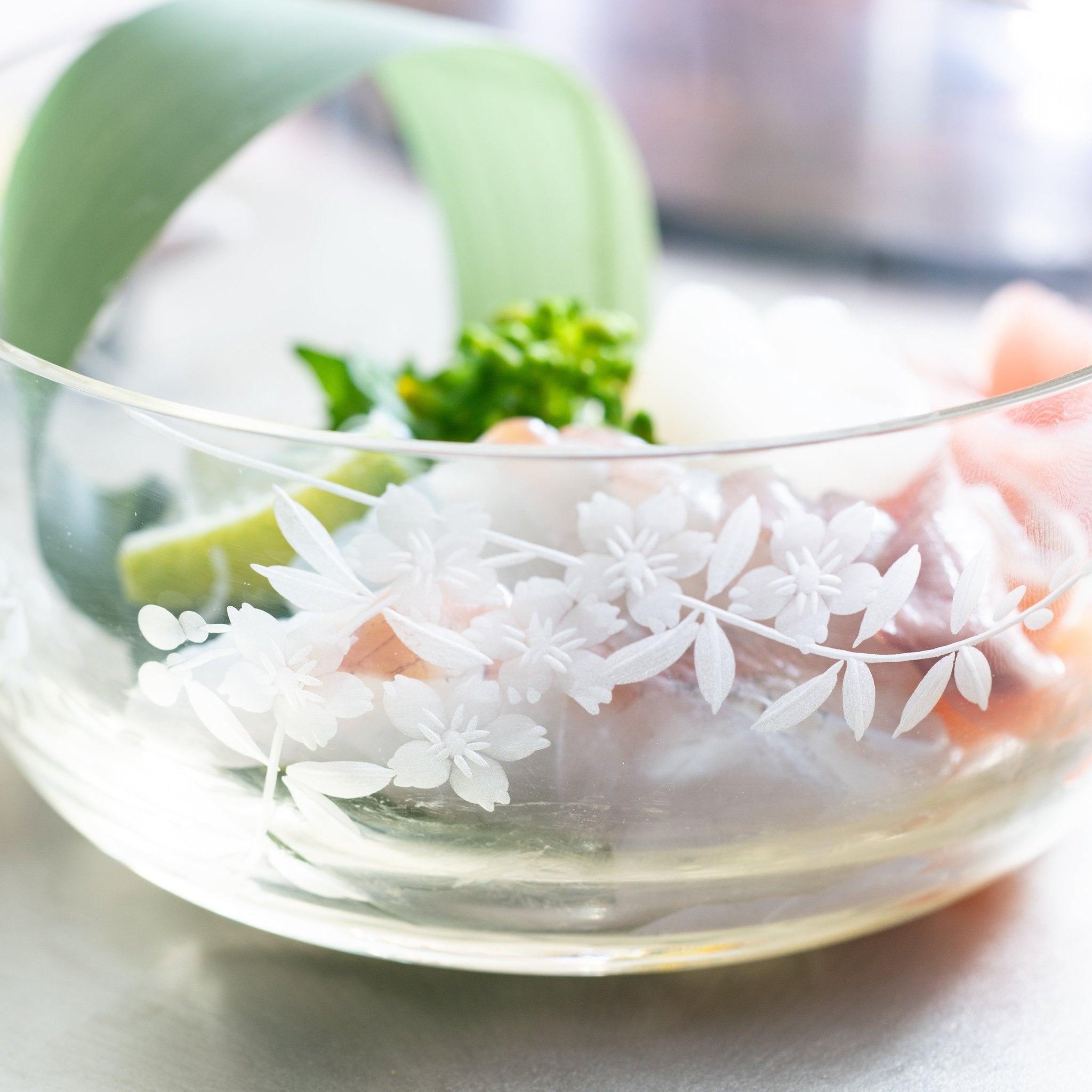
Weeping Cherry Blossom Kobachi Small Bowl
Estimated Shipping Widget will be displayed here!
This bowl is adorned with the distinctly Japanese weeping cherry blossom, expertly carved by artisan Otomo Kenji using the Edo Hanakiriko technique. The bowl's hue is an ancient color, imbued with a subtle yellow tint, and it aims to evoke a nostalgic atmosphere, making it perfectly suited for everyday use.
It not only showcases the color and state of the food within but also suits various tabletop materials. Enjoying the beautiful reflection it casts on the table is also a visual delight. Ideal for serving salads, desserts, or holding fruits, candies, or ice cream.
Edo Hanakiriko, a variant of the Edo Kiriko technique, was introduced to Japan from England during the Meiji era (1868–1912 CE). It requires the masterful skills of an artisan to etch intricately detailed patterns onto the glass surface. This method is characterized by its use of depth and contrast to depict the elegant cuts of flora.
Only the branches are preliminarily sketched in the rendering of cherry blossoms and branches. Leaves and petals are directly drawn based on intuition, giving each bowl truly unique. Not every inch of the surface is covered in patterns, leaving some spaces blank, which reflects the Japanese cultural appreciation for the beauty of negative space.
The cherry blossoms, a motif long cherished by the Japanese, make this Edo Hanakiriko bowl a delightful choice for personal use or as a thoughtful gift.
DETAILS
| Quantity | 1 |
| Size | D 11.5 cm (4.5 in) × H 5 cm (2 in) |
| Material | Glass |
| Package Type | Paper box |
| Microwave | No |
| Dishwasher | No |
Maker / Brand
Founded in 1899 during Japan’s transformative Meiji era (1868–1912 CE), Hirota Glass stands as one of Tokyo’s oldest glassmakers. With over a century of expertise, the company preserves the delicate techniques of Edo glass and Edo Kiriko while reimagining classic styles. From soft Taisho-era (1912–1926 CE) curves to modern reinterpretations, each piece embodies a dedication to beauty, function, and traditional Japanese charm.
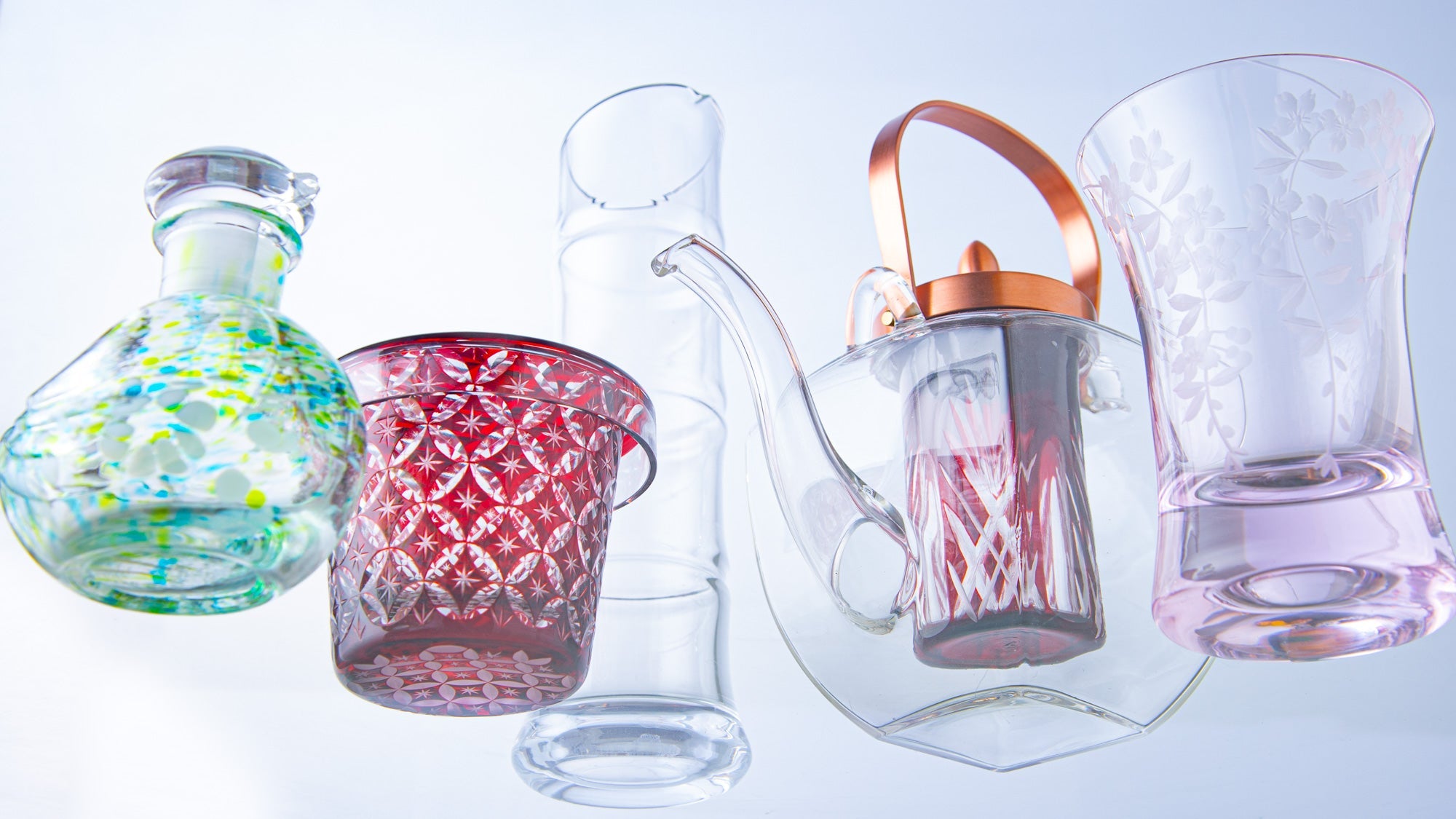
Crafts
Tokyo, the capital of Japan, is also a hub of craftsmanship. Among its many traditions, Edo Glass and Edo Kiriko are types of glassware that have been passed down for around 200 years in Edo—the former name for central Tokyo.
Their luminous surfaces echo centuries of craftsmanship, born in what was once Edo and still thriving in modern Tokyo.
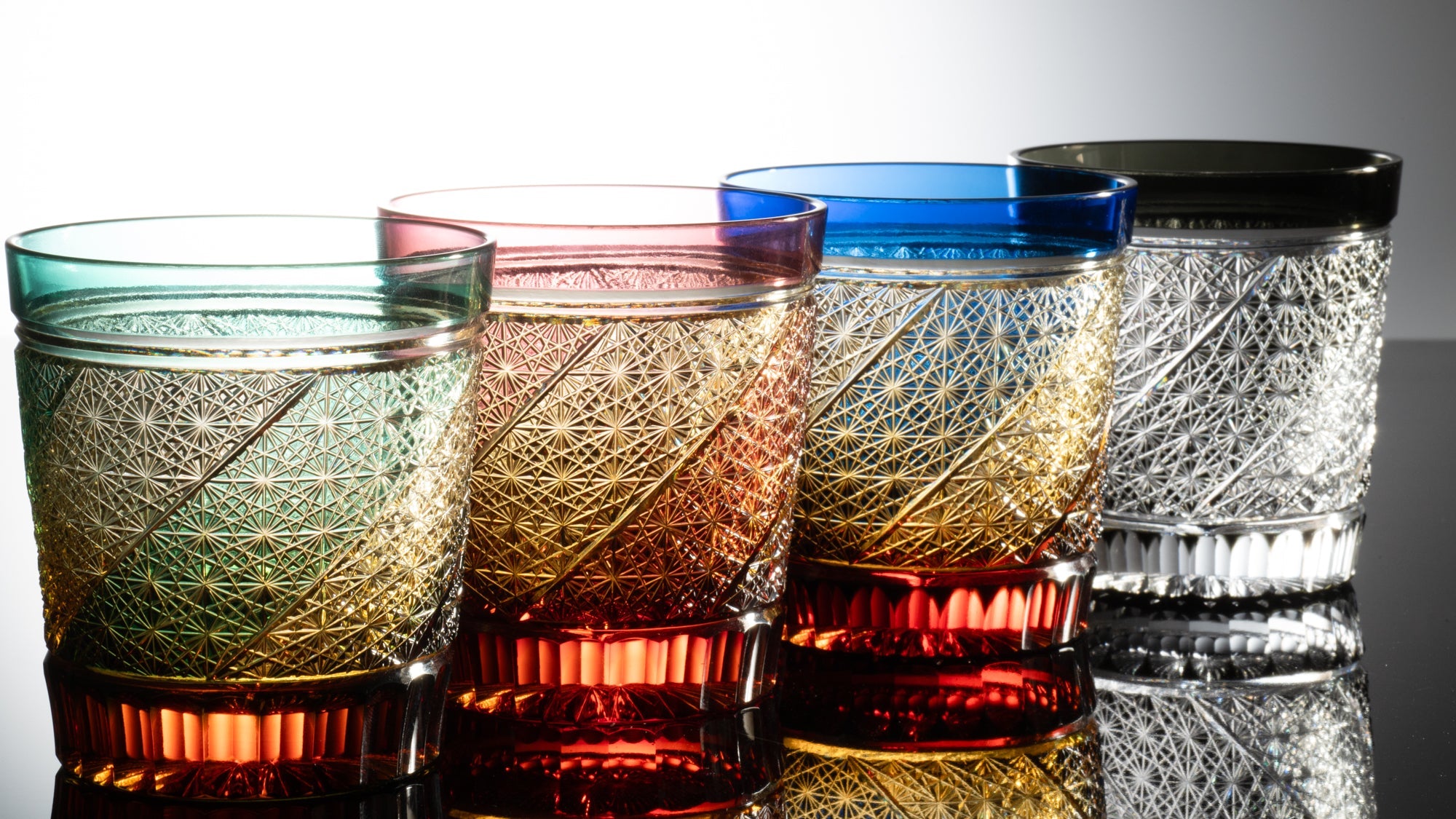
Choose options






















Estimated Shipping Widget will be displayed here!
Kobachi Small Bowls
Kobachi, literally “small bowls” in Japanese, are designed for serving appetizers and side dishes. Deeper than a small plate but smaller than a main course or ramen bowl, kobachi are just the right size for light stews and simmered vegetables. Incorporating one or several kobachi bowls into a table setting and arranging dishes of different sizes and colors lends your meal an authentic Japanese atmosphere.
This category includes bowls with diameters under 12.9 cm (5.1 in).
